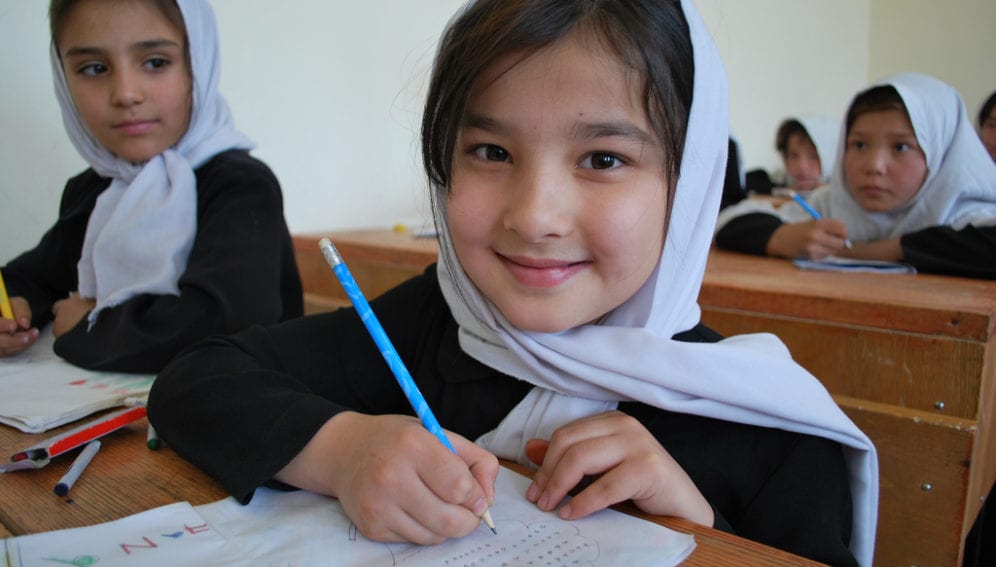By: Smriti Daniel
Send to a friend
The details you provide on this page will not be used to send unsolicited email, and will not be sold to a 3rd party. See privacy policy.
SciDev.Net’s South Asia edition reported its share of tragedies this year, but also saw science and technology being harnessed intra-regionally to mitigate the impact of disasters such as by data sharing.
Natural disasters and climate change
Countries across the region found themselves struggling to cope with unpredictable rainfall and extreme weather events in 2014.
Hundreds of lives were lost in the floods that followed torrential rainfall in Pakistan and India as the Jhelum and Chenab rivers overflowed in September. Thousands were displaced and vital infrastructure damaged during the floods. Our correspondent in Srinagar at time wrote on how ordinary people found innovative ways to help their communities.
In Nepal, a rock avalanche that killed over 150 people and temporarily turned the Sun Kosi River into a lake highlighted the country’s poor state of disaster-preparedness during the monsoon months. The country, which has lost more than a quarter of its glacial mass in the last three decades, also saw accelerated melting posing a potential threat.
Early in the year, experts feared significant crop losses in Sri Lanka as drought gripped parts of the island nation. The pendulum swung the other way later in the year, when floods and accompanying landslides claimed lives in the country’s Badulla district, highlighting the need for better disaster preparedness. However, in marking the tenth anniversary of the 2004 Asian Tsunami, there was good news to report as on Sri Lanka’s efforts on improved disaster management systems.
Intraregional cooperation
The calls for increased intraregional cooperation kept coming throughout 2014. South Asian scientists and legislators participating in a series of climate change dialogues held in Islamabad kicked off the year with a unanimous appeal to their governments to adopt a regional strategy to protect natural resources and adapt to climate change.
In the months that followed, SciDev.Net’s reportage took note of such South Asian networks that existed even as we saw the need for improvements. Pakistan and India sharing meteorological observations through a dedicated telecommunication network provided one such success story. Early detection of a low-pressure area in the Arabian Sea by the India Meteorological Department helped activate mitigation mechanisms in India and Pakistan against Cyclone Nilofar, which menaced coastal Pakistan and India’s Gujarat state in late October.
In an encouraging move, China agreed to share scientific knowledge with Nepal on the effects of climate and environmental changes on the Tibetan plateau. Yi Shaoliang, a natural resources specialist at ICIMOD told SciDev.Net: “Natural ecosystems don’t follow national boundaries, so we need cross-boundary collaborations to fill in the knowledge gap between countries to better understand our environments.”
Better data dissemination was another story. When a snowstorm claimed 39 lives on one of Nepal’s popular trekking routes in October, mechanisms to disseminate effective warnings at a local level failed. The tragedy served to highlight the urgent need for better early-warning systems in the Himalayas.
Intraregional cooperation was a hot-button issue in our first live online debate. SciDev.Net’s South Asia edition turned the spotlight on the conflicts and challenges around water sharing, river management and cross border arrangements in the region. Shoring up the Indus Waters Treaty could help India and Pakistan better manage shared water resources, argued our experts calling for technology and knowledge updates.
Exciting research and innovation
This was the year of Mangalyaan, as India’s Mars Orbiter Mission made history and grabbed headlines the world-over. When it successfully entered Martian orbit, it made India the only country to achieve the feat on a first attempt — and that at a cheap US$71 million. The dazzling success story seemed to signal possibilities for India’ neighbours in South Asia to enter the rarefied world of space science.
Innovators also turned their talents to meeting more Earth-bound problems. One proposed recycling urine collected at public toilets as an inexpensive and simple way to produce fertiliser. Other innovators sought to defeat dengue by treating school children’s uniforms with insecticide, produced cheap yet effective clay and rice husk filters to deliver clean water and built more resilient bricks out of plastic, even as researchers elsewhere prepared for human trials of the world’s first leprosy vaccine, unravelled the ‘malarial barcode’ and sequenced the peanut genome.
Health and disease
In 2014, the spread of drug-resistant bacteria through water was identified as an emerging, serious public health threat across Asia. High levels of antibiotic resistance genes found in the waters of the sacred Ganges River raised a red flag.
Studies announced a host of other threats: Animal-borne parasites were found to pose a bigger threat to public health in Nepal than malaria or HIV/AIDS, evolving dengue strains were identified as the culprits behind recent epidemics in Sri Lanka and Pakistan’s rivers were reported to be heavily contaminated with persistent organic pollutants. Aflatoxin — a toxic contaminant in food crops and known to cause liver cancer — was found in unacceptably high levels in the bloodstream of pregnant women in Nepal and Bangladesh, while a high incidence of anaemia among brick kiln workers in Pakistan was linked to exposure to toxins produced by burning low-cost fuels.
Polio was in the headlines as Pakistan struggled to eradicate it, and India succeeded. More than 2.3 million vaccinators and volunteers were behind the historic campaign to wipe out the disease in India. “This is the biggest public health success story of the century. Everybody is learning from India,” Naveen Thacker, president-elect of the Asia Pacific Paediatric Nurses Association and former member of India’s expert advisory group on polio, told SciDev.Net.
Is there a 2014 story we haven’t mentioned that you found particularly noteworthy? Do share your opinions in the space for comments below.
This article has been produced by SciDev.Net's South Asia desk.














